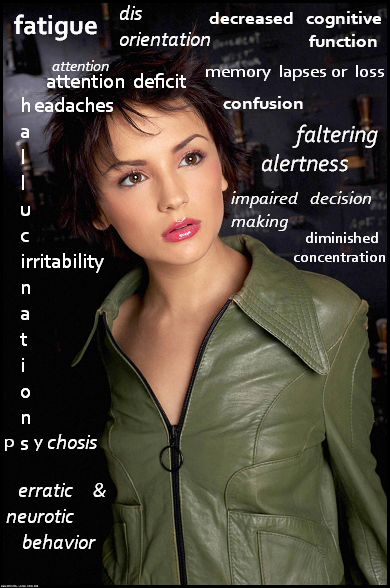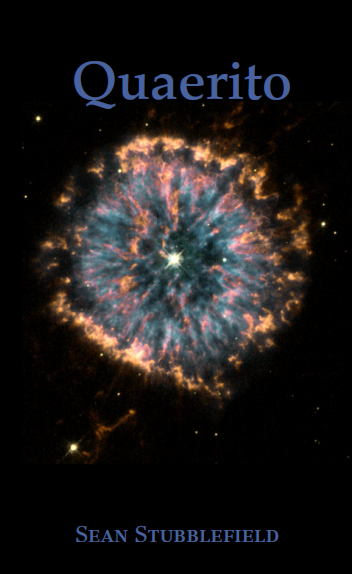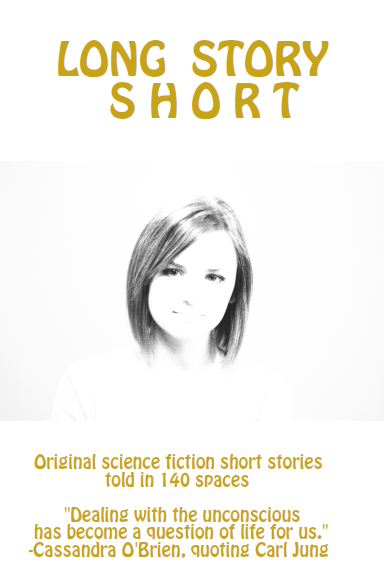Saturday, August 27, 2011
Saturday, August 20, 2011
Historical Markers
In most cases, the decade a film or TV show was made can be discerned by their production aesthetic (with marginal overlap on fore and aft adjacent decades)—at least regarding American cinema.
TV shows and movies created in the 1990s have a different look, tone and content approach than those created in the ‘80s, and those created in the ‘70s do not look and feel the same as those from the ‘60s and ‘50s, etc.
Cinematic styles of bygone eras intrinsically and invariably reflect, and are the result of, a gestalt in/ during the time they are created.
It seems the kind of people who could produce a cinematic style are limited to and defined by the era in which the films or TV shows are made. Creator and created exist in a symbiotic temporal bubble.
Consider: could a movie like Dark Crystal ever be made today? Or even The Matrix?
Or a TV series like The Original Star Trek? Or Space 1999?
Practical special effects, as they are called-- like model work and animatronic puppetry and studio sets and matte paintings (which imbued older, pre-CGI cinema with a distinct character and authenticity)-- have regrettably been replaced (as superior) by synthetic artificiality of computer generated imagery. Practical effects instill a sense and appearance of realism and substance that computer manufactured features innately lack (at least so far).
Rather than improving on or advancing visual production techniques, more often than not, CGI is actually more deficient and inferior in creating authentic attributes.
A puppet Yoda looks like a real and living creature, while a Yoda rendered by computer is clearly fake.
On a related (but separate) note, history seems routinely and too casually defined by an American standard since the 1700s.
When we talk of the 1930s, the ‘60s, the ‘80s and such, it is with reference to American culture.
As if no other country had their own ‘30s and ‘60s and ‘80s.
TV shows and movies created in the 1990s have a different look, tone and content approach than those created in the ‘80s, and those created in the ‘70s do not look and feel the same as those from the ‘60s and ‘50s, etc.
Cinematic styles of bygone eras intrinsically and invariably reflect, and are the result of, a gestalt in/ during the time they are created.
It seems the kind of people who could produce a cinematic style are limited to and defined by the era in which the films or TV shows are made. Creator and created exist in a symbiotic temporal bubble.
Consider: could a movie like Dark Crystal ever be made today? Or even The Matrix?
Or a TV series like The Original Star Trek? Or Space 1999?
Practical special effects, as they are called-- like model work and animatronic puppetry and studio sets and matte paintings (which imbued older, pre-CGI cinema with a distinct character and authenticity)-- have regrettably been replaced (as superior
Rather than improving on or advancing visual production techniques, more often than not, CGI is actually more deficient and inferior in creating authentic attributes.
A puppet Yoda looks like a real and living creature, while a Yoda rendered by computer is clearly fake.
On a related (but separate) note, history seems routinely and too casually defined by an American standard since the 1700s.
When we talk of the 1930s, the ‘60s, the ‘80s and such, it is with reference to American culture.
As if no other country had their own ‘30s and ‘60s and ‘80s.
Suspicion of Disbelief
Frequently, I’ll be reading a book, watching TV or a movie, and see ways the story could be improved and elevated. Usually good stories, except for a few flaws.
I notice narrative or logical mistakes that could easily be prevented if only the creators had bothered to consult me. These discrepancies dislodge or throw me out of the story. I am compelled to re-imagine or rewrite scenes and dialogue in my head, making the appropriate corrections. Making the story right.
Maybe that sounds arrogant & presumptuous. Or maybe, instead, it actually sounds like I Know things about storytelling.
I get annoyed because I was not consulted; and because of their neglect, the story suffers needlessly.
And by extension, the audience suffers.
Dude, I’m right here! My fee is not unreasonable.
There are also many times during a story when I find moments of authenticity fail; things that strain or defy credibility or lack a sense of realism or believability. And in those moments, I say “I don’t believe you.”
I also often say this during most contemporary commercials, which are clearly out of touch with majority reality in America. For example, T-Mobile obnoxiously presents a skewed view in the implication of the exaggerated importance and commonality of 4G… with their iPhones and iPads and Tablets.
An assumption is projected and proliferated that the common standard is that the majority actually does live online and through their digital devices, when the truth is that a relatively small portion of the population lives this way. Most people do not.
And egregious car commercials, who blithely talk about so called deals like several thousand dollars is nothing… as if most people can afford a new car, when the reality is few of us have enough money for even a used one. A new car for only $20,000? Really? Is that all?
These kinds of commercials are trying to impose or synthesize a false reality onto us, by acting as if the lifestyle they depict is much more common than it really is. They try to convince us of-- and into—an illusory lifestyle, as if saying it is real makes it so.
I notice narrative or logical mistakes that could easily be prevented if only the creators had bothered to consult me. These discrepancies dislodge or throw me out of the story. I am compelled to re-imagine or rewrite scenes and dialogue in my head, making the appropriate corrections. Making the story right.
Maybe that sounds arrogant & presumptuous. Or maybe, instead, it actually sounds like I Know things about storytelling.
I get annoyed because I was not consulted; and because of their neglect, the story suffers needlessly.
And by extension, the audience suffers.
Dude, I’m right here! My fee is not unreasonable.
There are also many times during a story when I find moments of authenticity fail; things that strain or defy credibility or lack a sense of realism or believability. And in those moments, I say “I don’t believe you.”
I also often say this during most contemporary commercials, which are clearly out of touch with majority reality in America. For example, T-Mobile obnoxiously presents a skewed view in the implication of the exaggerated importance and commonality of 4G… with their iPhones and iPads and Tablets.
An assumption is projected and proliferated that the common standard is that the majority actually does live online and through their digital devices, when the truth is that a relatively small portion of the population lives this way. Most people do not.
And egregious car commercials, who blithely talk about so called deals like several thousand dollars is nothing… as if most people can afford a new car, when the reality is few of us have enough money for even a used one. A new car for only $20,000? Really? Is that all?
These kinds of commercials are trying to impose or synthesize a false reality onto us, by acting as if the lifestyle they depict is much more common than it really is. They try to convince us of-- and into—an illusory lifestyle, as if saying it is real makes it so.
Saturday, August 13, 2011
Not All Who Wander Are Lost
Even among writers— maybe especially among writers, a lot of erroneous advice and assumptions are perpetuated about the “correct” way to write… as if there were such a thing as One True Way to write stories properly. I’m not referring to the grammar and logic and authenticity which comprise a well constructed story.
A perniciously utilitarian, economical attitude inundates and diminishes our contemporary story telling mentality— something can’t (or should not) exist unless it’s good for something… unless it “moves” or advances the narrative along. If it is in the story, it ought to be clearly contributing something. Directly filling some definitive, comprehendible role or purpose, or else it should be omitted.
But real life doesn’t work that way, so why should we expect stories to?
Expecting something to be obviously and economically useful is a very Western (and unhealthy) assumption.
Playing on and into our current social environment, this exacerbates and reinforces short attention spans and dumbing down media, as both symbiotic/ simultaneous effect and cause of each other. Most people are under the misguided impression that we should be able to summarize a narrative into a simplified “elevator pitch” or bullet points. And if you can’t, then either you don’t know well enough what the story is, or there is something innately wrong with the story’s conception.
Common, conventional writing advice advocates keeping things as short and simple as possible, with no room for extraneous or ancillary details. This “always be useful” approach does not enable us to be fanciful or artistic or experimental with text and format. Arbitrarily and unnecessarily restricting what one can and can not do (what one is and is not supposed to do) with a story, preventing exploratory and random world building or character development. Contriving a simple narrative and coercing a concise and coherent ending— which further engenders a general expectation of simple accounts for experiences, and over-simplified single-factor explanations.
The narrative— we are typically led to believe-- is supposed to be a direct and certain line between specific, even linear, plot points.
It must have a definite plot, an arc, a theme, a message, a point. There should be no superfluous characters who are non-essential or non-referential to the plot. Characters are not allowed to be doing nothing. Indicative of distinctly Western tendencies, the characters (and narrative itself) must always be active, in motion, going… and going… and...
Because the text is not allowed to wander or meander off course, diverge and deviate and digress into tangents, it requires or encourages deliberately simplistic characters and stories with a get-to-the-point, paint-by-numbers structure; as well as fostering formulaic design and cliché.
With my fiction, I attempt to counter the insipid status quo of such assumptions.
A perniciously utilitarian, economical attitude inundates and diminishes our contemporary story telling mentality— something can’t (or should not) exist unless it’s good for something… unless it “moves” or advances the narrative along. If it is in the story, it ought to be clearly contributing something. Directly filling some definitive, comprehendible role or purpose, or else it should be omitted.
But real life doesn’t work that way, so why should we expect stories to?
Expecting something to be obviously and economically useful is a very Western (and unhealthy) assumption.
Playing on and into our current social environment, this exacerbates and reinforces short attention spans and dumbing down media, as both symbiotic/ simultaneous effect and cause of each other. Most people are under the misguided impression that we should be able to summarize a narrative into a simplified “elevator pitch” or bullet points. And if you can’t, then either you don’t know well enough what the story is, or there is something innately wrong with the story’s conception.
Common, conventional writing advice advocates keeping things as short and simple as possible, with no room for extraneous or ancillary details. This “always be useful” approach does not enable us to be fanciful or artistic or experimental with text and format. Arbitrarily and unnecessarily restricting what one can and can not do (what one is and is not supposed to do) with a story, preventing exploratory and random world building or character development. Contriving a simple narrative and coercing a concise and coherent ending— which further engenders a general expectation of simple accounts for experiences, and over-simplified single-factor explanations.
The narrative— we are typically led to believe-- is supposed to be a direct and certain line between specific, even linear, plot points.
It must have a definite plot, an arc, a theme, a message, a point. There should be no superfluous characters who are non-essential or non-referential to the plot. Characters are not allowed to be doing nothing. Indicative of distinctly Western tendencies, the characters (and narrative itself) must always be active, in motion, going… and going… and...
Because the text is not allowed to wander or meander off course, diverge and deviate and digress into tangents, it requires or encourages deliberately simplistic characters and stories with a get-to-the-point, paint-by-numbers structure; as well as fostering formulaic design and cliché.
With my fiction, I attempt to counter the insipid status quo of such assumptions.
Next Big Thing?
After Vampires, Werewolves and Zombies, what is the next Big Thing trend in stories?
Ghost? Sasquatch? Genetic Mutant? Cyborg?
No. Circus and Carnival.
We can already see this theme appearing in the last few years.
Seen recently in Batman and Robin comics. Soon to be in Nightwing comics. An aspect in The Cape TV series. A short film called The Butterfly Circus. Featured in Hillywood’s Dark Knight parody. A Torchwood episode. Olga Kay’s Circus.
Sensing this, I even integrated this intriguingly fantastical aesthetic into my Cassie O’Brien back story.
These are just a few samples.
Ghost? Sasquatch? Genetic Mutant? Cyborg?
No. Circus and Carnival.
We can already see this theme appearing in the last few years.
Seen recently in Batman and Robin comics. Soon to be in Nightwing comics. An aspect in The Cape TV series. A short film called The Butterfly Circus. Featured in Hillywood’s Dark Knight parody. A Torchwood episode. Olga Kay’s Circus.
Sensing this, I even integrated this intriguingly fantastical aesthetic into my Cassie O’Brien back story.
These are just a few samples.
Subscribe to:
Posts (Atom)





















